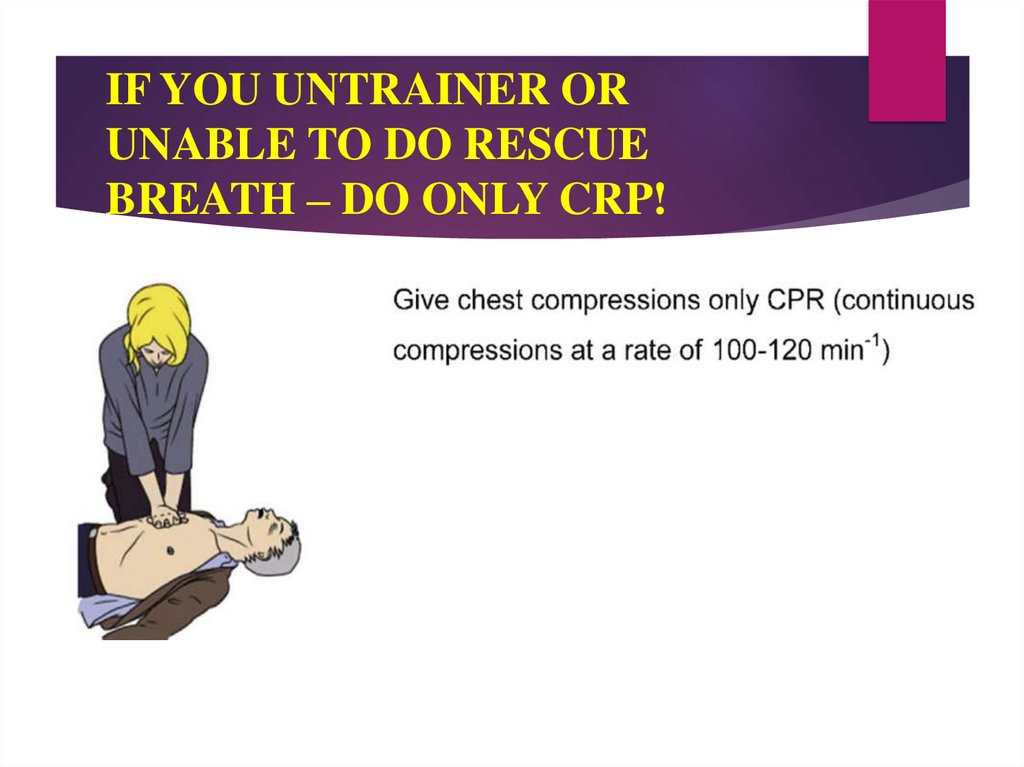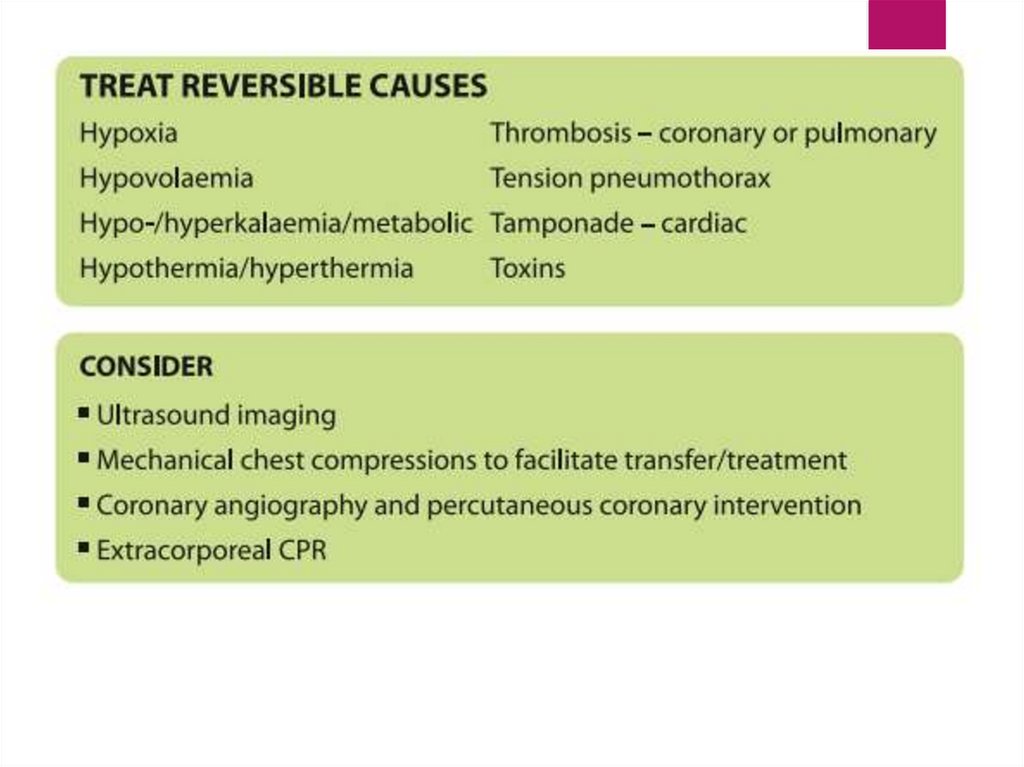Похожие презентации:
Cardiac arrest diagnosis and treatment
1. Cardiac arrest diagnosis and treatment
JITENDERSINGH
GROUP-63
2. What is Cardiac Arrest?
Cardiac arrest is an extreme andsudden medical emergency
condition in which the heart stops
its functioning and there is an
unexpected loss of breath and
consciousness. Cardiac arrest
and heart attack are most often
confused to be the same but they
are not.
3. Cardiac Arrest
4.
Guidelines 2015 highlights the critical importanceof the interactions between the emergency medical
dispatcher, the bystander who provides CPR and
the timely deployment of an automated external
defibrillator.
An effective, co-ordinated community response
that draws these elements together is key to
improving survival from out-of-hospital cardiac
arrest.
5.
6.
Sudden cardiac arrest (SCA) is one of theleading causes of death in Europe.
Depending how SCA is defined, about 55–113
per 100,000 inhabitants a year or 350,000–
700,000 individuals a year are affected in
Europe.
7. . Who Is at Risk for Cardiac Arrest?
.Certain heart conditions and health factors can increase your risk of cardiac arrest.
Coronary Heart Disease
This type of heart disease begins in the coronary arteries. These arteries supply the
heart muscle itself. When they become blocked, your heart does not receive blood. It
may stop working properly.
Large Heart
Having an abnormally large heart places you at increased risk for cardiac arrest. A large
heart may not beat correctly. The muscle may also be more prone to damage.
Irregular Heart Valves
Valve disease can make heart valves leaky or narrower. This means blood circulating
through the heart either overloads the chambers with blood or does not fill them to
capacity. The chambers may become weakened or enlarged.
Congenital Heart Disease
Some people are born with heart damage. This is known as a congenital heart problem.
Sudden cardiac arrest may occurin children who were born with a serious heart
problem.
8.
The Chain of Survival summarizes the vitallinks needed for successful resuscitation.
Most of these links apply to victims
of both primary cardiac and asphyxia arrest
9. THE CHAIN OF SURVIVE
10. Early recognition and call for help
Chest pain should be recognized as a symptom of myocardialischaemia. Cardiac arrest occurs in a quarter to a third of
patients with myocardial ischaemia within the first hour after
onset of chest pain
Once cardiac arrest has occurred, early recognition is critical to
enable rapid activation of the EMS and prompt initiation of
bystander CPR.
The key observations are unresponsiveness and not
breathing normally.
11. Early bystander CPR
The immediate initiation of CPR can double or quadruple survivalfrom cardiac arrest.
If able, bystanders with CPR training should give chest
compressions together with ventilations.
When a bystander has not been trained in CPR, the emergency
medical dispatcher should instruct him or her to give chest
compression-only CPR while awaiting the arrival of
professional help.
12. Early defibrillation
Defibrillation within 3–5 min of collapse canproduce survival rates as high as 50–70%.
Each minute of delay to defibrillation reduces
the probability of survival to discharge by 10–12%.
13. Early advanced life support and standardized post-resuscitation care
Advanced life support with airway management, drugsand correcting causal factors may be needed if initial
attempts at resuscitation are un-successful.
14.
15.
16. OPEN THE AIRWAY
17. LOOK, LISTEN AND FELL FOR NORMAL BREATHING!
18. Unresponsive and nor breathing normally – alert emergency service – 112 in Europe, 103 – in Russia
19. SEND SOMBODY FOR AED (IN EUROPE)
20. START CHEST COMPRESSIONS
21.
22.
23.
24. IF YOU UNTRAINER OR UNABLE TO DO RESCUE BREATH – DO ONLY CRP!
25. When providing manual chest compressions:
1. Deliver compressions ‘in the centre of the chest’.2. Compress to a depth of at least 5 cm but not more
than 6 cm.
3. Compress the chest at a rate of 100–120 min−1
with as few interruptions as possible.
4. Allow the chest to recoil completely after each
compression; do not lean on the chest.
26. WHEN AED ARRIVES
27.
28.
29. IF NO SHOCK IS INDICATED
30. IF NO AED CONTINUE CRP!
31.
32. Diagnosing Cardiac Arrest
During a cardiac event that causes your heart to stop beating efficiently, it’s vital toseek medical attention immediately. Medical treatment will focus on getting blood
flowing back to your body. Your doctor will most likely perform a test called an
electrocardiogram to identify the type of abnormal rhythm your heart is experiencing.
To treat the condition, your doctor will likely use a defibrillator to shock your heart.
An electric shock can often return the heart to a normal rhythm.
:





































 Медицина
Медицина








